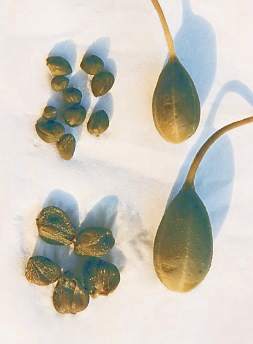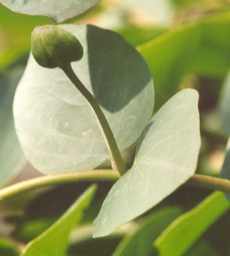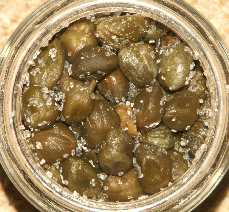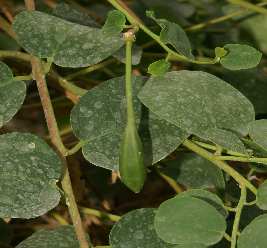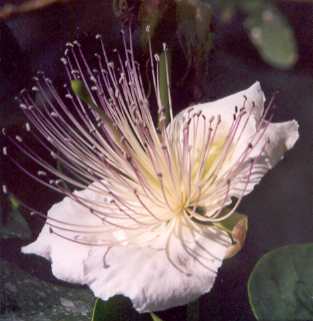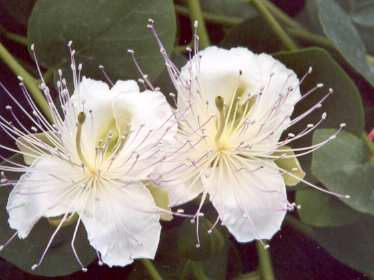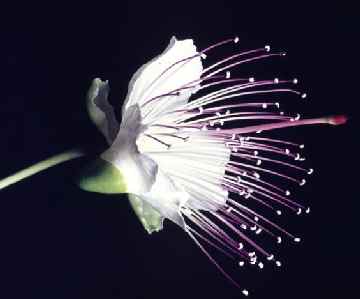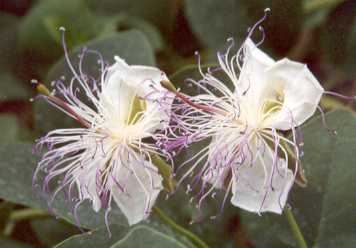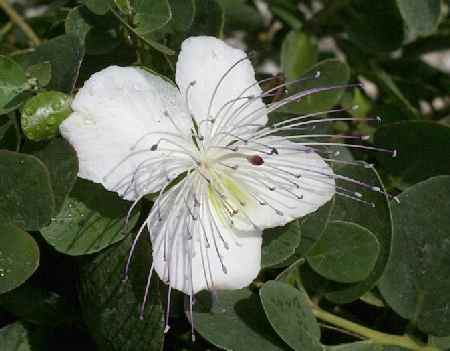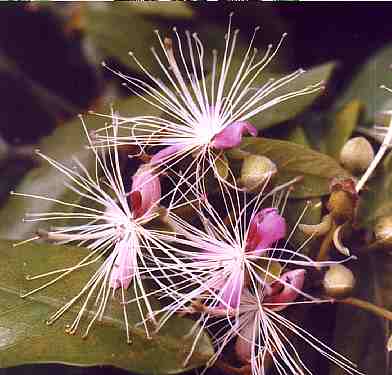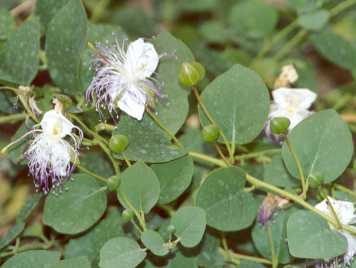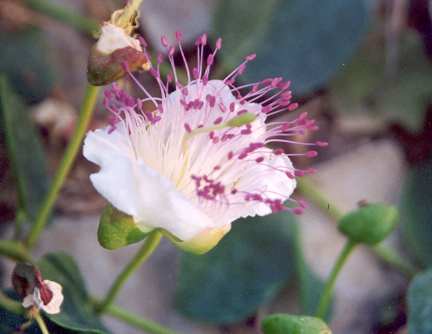
|
| Young caper flower |
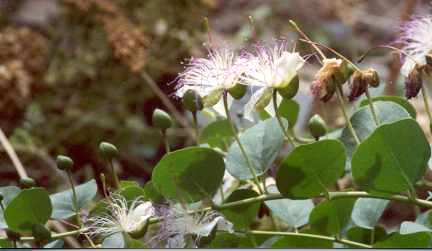
|
| Caper branch with flowers |
Capers are essential for several Mediterranean cuisines and are mostly associated with Italian (and Cypriot) foods. They are mostly applied to tomato or wine sauces and fit well to poultry and fish. Furthermore, they are popular with cold meat and frequently used for Italian pizza (see oregano). Capers harmonize with most other Mediterranean spices (basil, oregano and garlic, just to name a few) and are frequently combined with pickled olives.
A famous recipe from Italy is vitello tonnato, veal in
tuna-flavoured sauce (the Italian name translates to tuna-ed veal
).
A piece of veal shoulder is simmered in a well-flavoured mixture of
vegetable broth and white wine, cut in thin slices and marinated with a
special sauce,
salsa tonnata. The latter is in principle an emulgated
sauce of mayonnaise type (see also tarragon)
made from egg yolk, white wine (or white vinegar),
lemon juice and
olive oil which owes its intensive flavour to a
puree of canned tuna, fermented fish (anchovies)
and capers. Vitello tonnato is eaten cold, typically as an
appetizer or as an intermediate course.
The cuisines of Central and Northern Europe with their general preference for
lightly flavoured foods have come to use capers, too;
the main applications are cold dishes (fish salads, minced meat and savoury
vegetable salads). Many sauces owe their special character to the addition of a
few chopped capers; heating such sauces must, though, be avoided, because
capers’ aroma gets quickly destroyed by higher temperature. It is best to add
capers as late as possible to the sauce, when it is but lukewarm; they go
well with chervil and tarragon.
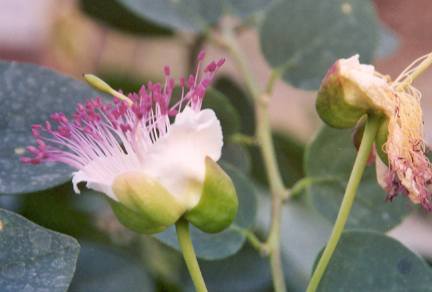
|
| Caper flower |

|
| Caper branch with flower and fruit |
Königsberger Klopse (East-Prussian meatballs, Keenichsberje Kochklepse) are a remarkable specialty named for Königsberg, the former capital of Eastern Prussia, today called Kaliningrad (Russia). A mixture of ground meat (veal or a combination of veal and pork seems most authentic), white bread, milk, eggs, pungent anchovies and spices (garlic, onion, horseradish, parsley) is formed into dumplings, which are carefully boiled in a well-flavoured broth and served with a creamy sauce made from cream, capers and a dash of lemon juice. The recipe has certainly somewhat a Mediterranean character by the usage of capers and anchovies; on the other side, milk and cream are commonly used in other Baltic foods. Some recipes for Königsberger Klopse replace the cream partially or totally by a very light roux.
The buds of several other pungent plants have, in poor times, been used as a substitute for capers; today, these adulterations have become very rare. True capers are easily identified by their unsymmetrical four sepals. Of all caper substitutes, nasturtium buds seem to have the most culinary merits; others, like broom and marsh marigold, are not even worth trying.
Caper berries are the fruits of the caper shrub, processed in much the same
way as capers. The olive- to gherkin-
Outside of the Mediterranean and the Caucasus mountains, capers are not much
known, although the
pickled fruits of some Central Asian species (e. g., Capparis
aphylla) are occasionally used as flavouring in Afghanistan, Pakistan
and North Western India.
Capers have been introduced to Central America by the
Spaniards and, accordingly, appear in some foods of México, especially in
recipes with dominantly Spanish character avoiding all New World ingredients.
The indigenous population has not yet adopted use of capers in any larger scale.
